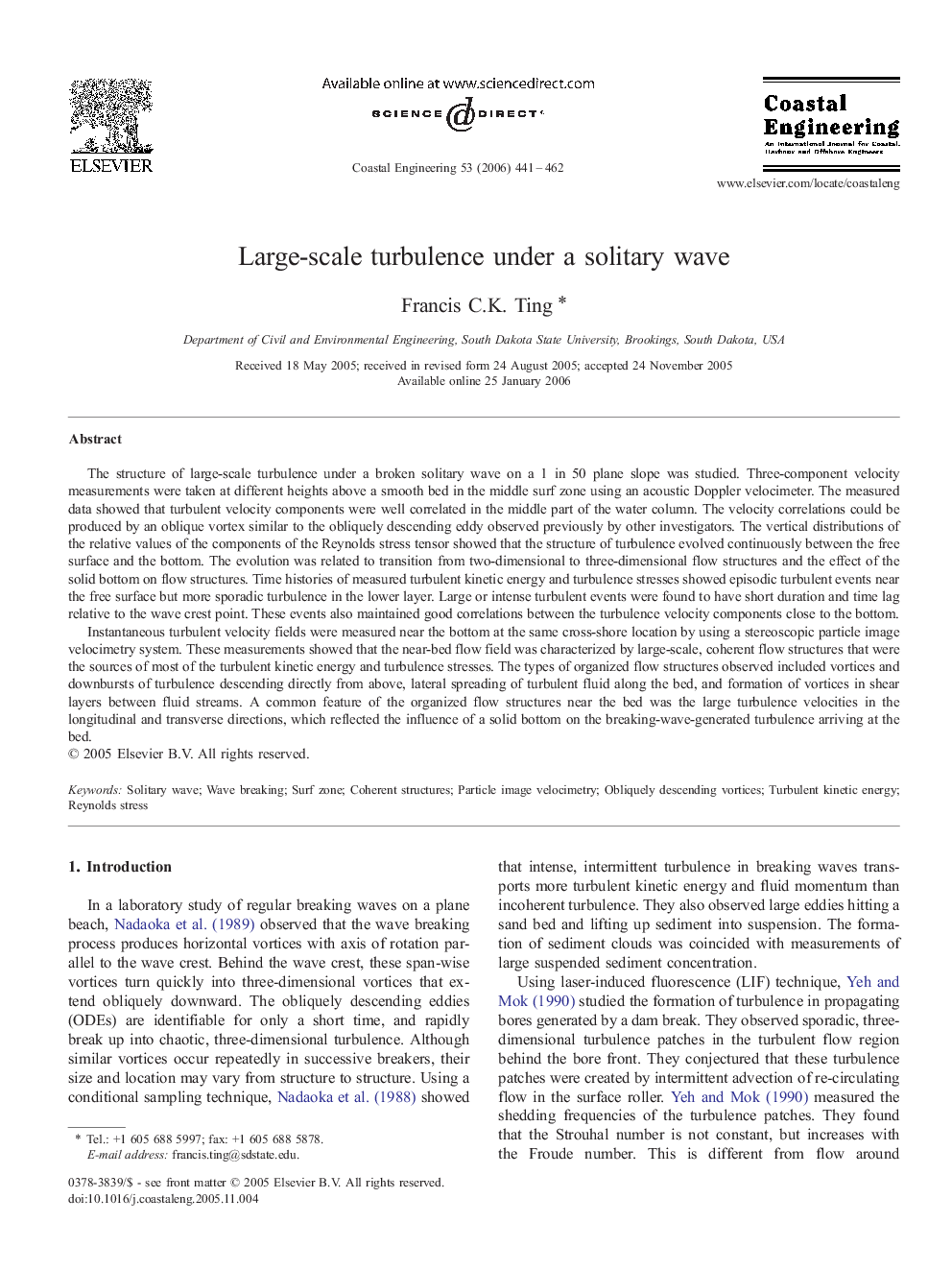| کد مقاله | کد نشریه | سال انتشار | مقاله انگلیسی | نسخه تمام متن |
|---|---|---|---|---|
| 1721703 | 1520400 | 2006 | 22 صفحه PDF | دانلود رایگان |

The structure of large-scale turbulence under a broken solitary wave on a 1 in 50 plane slope was studied. Three-component velocity measurements were taken at different heights above a smooth bed in the middle surf zone using an acoustic Doppler velocimeter. The measured data showed that turbulent velocity components were well correlated in the middle part of the water column. The velocity correlations could be produced by an oblique vortex similar to the obliquely descending eddy observed previously by other investigators. The vertical distributions of the relative values of the components of the Reynolds stress tensor showed that the structure of turbulence evolved continuously between the free surface and the bottom. The evolution was related to transition from two-dimensional to three-dimensional flow structures and the effect of the solid bottom on flow structures. Time histories of measured turbulent kinetic energy and turbulence stresses showed episodic turbulent events near the free surface but more sporadic turbulence in the lower layer. Large or intense turbulent events were found to have short duration and time lag relative to the wave crest point. These events also maintained good correlations between the turbulence velocity components close to the bottom.Instantaneous turbulent velocity fields were measured near the bottom at the same cross-shore location by using a stereoscopic particle image velocimetry system. These measurements showed that the near-bed flow field was characterized by large-scale, coherent flow structures that were the sources of most of the turbulent kinetic energy and turbulence stresses. The types of organized flow structures observed included vortices and downbursts of turbulence descending directly from above, lateral spreading of turbulent fluid along the bed, and formation of vortices in shear layers between fluid streams. A common feature of the organized flow structures near the bed was the large turbulence velocities in the longitudinal and transverse directions, which reflected the influence of a solid bottom on the breaking-wave-generated turbulence arriving at the bed.
Journal: Coastal Engineering - Volume 53, Issues 5–6, April 2006, Pages 441–462